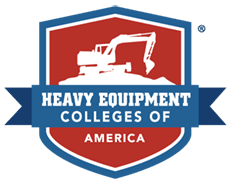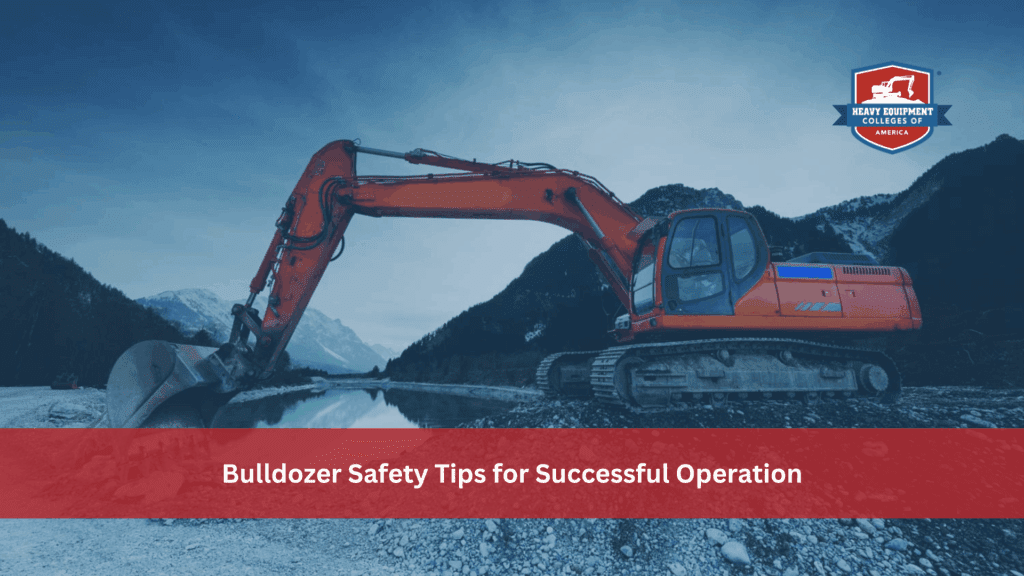Bulldozers: What You Need to Know
Operating a bulldozer demands an unwavering commitment to safety. These are some of the most powerful pieces of heavy equipment on a worksite, capable of moving massive amounts of material with precision. However, without the right precautions, they can cause serious injury, costly damage, or even fatalities.
At Heavy Equipment Colleges of America (HEC), we strive to help set heavy equipment operators up for success in the industry. Our proven bulldozer operation safety guide helps protect operators, nearby workers, and the job site itself.
These tips not only reduce the risk of accidents but also ensure compliance with workplace safety standards, extend the life of your equipment, and keep projects running on schedule.
Table of Contents
Start Your bulldozer Operator Career With Confidence
Kickstart Your bulldozer Operator Journey Today!
Hands-On Training | OSHA-Compliant Courses | Job-Ready Skills
Become a Certified Tower Bulldozer Operator Today!
Start Enrollment ProcessFind The Right Location For YouBulldozers: What You Need to Know
A bulldozer, often referred to as a dozer, is a track-mounted tractor fitted with a large, heavy blade at the front. This blade pushes soil, sand, rubble, or debris during a wide range of projects.
Many bulldozers are also equipped with rippers, which are claw-like attachments that break up hard ground before grading or moving material.
The primary features of a bulldozer include:
- Blades: These can include straight (S-blade) for fine grading, universal (U-blade) for pushing large loads, and semi-universal (SU-blade) for versatile applications.
- Rippers: Designed to loosen compacted materials, making them easier to move.
- Crawler Tracks: Wide tracks that distribute weight evenly, allowing operation on uneven or soft ground without sinking.
- Enclosed Cab: Protects the operator from weather and debris while providing control over the machine.
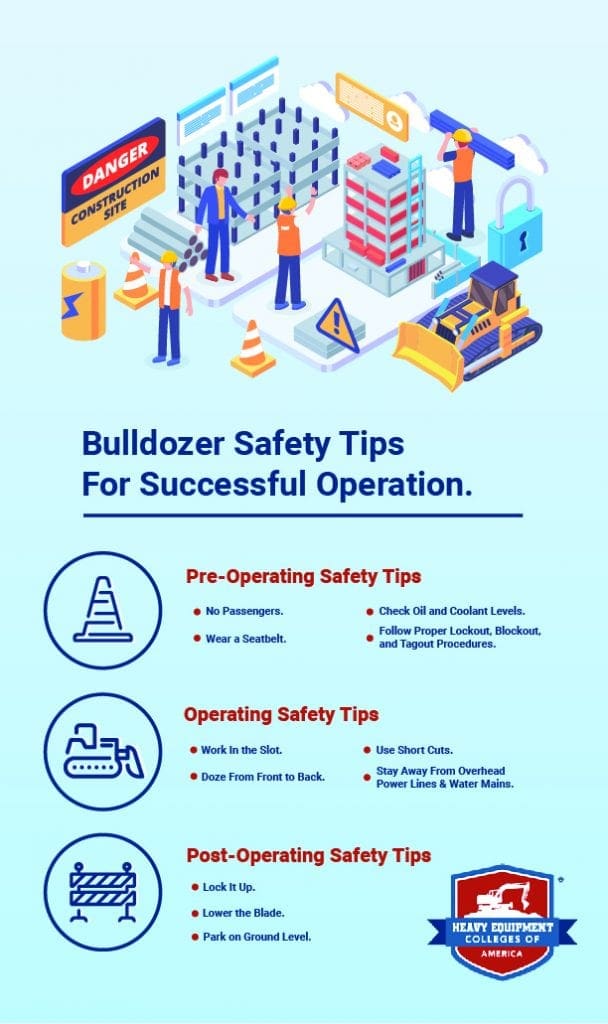
Bulldozer Operating Safety Tips
Operating a bulldozer safely involves following a consistent set of best practices before, during, and after use. By incorporating these bulldozer operation safety measures into your daily routine, you can minimize risks, improve efficiency, and build a professional reputation for safe, reliable operation.
1. Pre-Operating Safety Tips for a Bulldozer
Before starting up a bulldozer, a thorough pre-operation inspection ensures both safety and efficiency. Skipping this step increases the risk of mechanical failure and accidents once the machine is in motion.
Here is an example of a detailed pre-operation checklist:
- Conduct a Visual Inspection: Look for leaks, loose bolts, cracked welds, or worn tracks that could compromise performance.
- Check All Fluid Levels: This includes hydraulic fluid, engine oil, coolant, and fuel. Low levels can cause overheating or loss of control.
- Test Controls and Safety Features: Make sure brakes, horns, lights, seatbelts, and backup alarms are fully functional.
- Inspect Blades and Attachments: Check for damage, wear, or loose connections that could cause operational hazards.
- Assess the Worksite: Identify soft ground, steep slopes, overhead hazards, and other risk areas before starting.
- Wear the Proper PPE: Hard hats, steel-toe boots, gloves, reflective vests, and hearing protection should be standard.
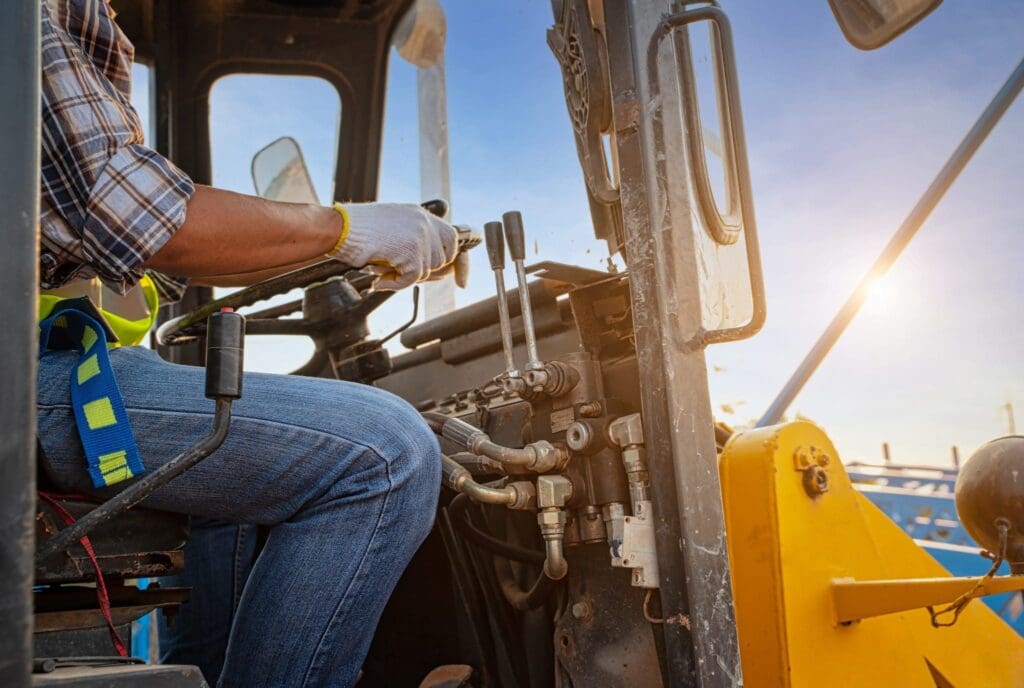
2. Safety Tips While Operating a Bulldozer
Once the bulldozer is in motion, the operator’s focus must remain on control, communication, and awareness. Even minor distractions can lead to significant safety issues.
When operating a bulldozer, always make sure to:
- Maintain Proper Seating Posture: Keep your seatbelt fastened, sit upright, and position your hands on the controls for quick response.
- Operate at Controlled Speeds: Excessive speed increases stopping distance and reduces control, especially on slopes.
- Ensure Clear Visibility: Use mirrors and cameras if equipped, and rely on spotters in areas with limited visibility.
- Adapt to Ground Conditions: Slow down on soft or uneven terrain to prevent tipping.
- Handle Slopes Cautiously: Always work up and down slopes, not across, to minimize rollover risk.
- Avoid Overloading: Pushing too much material strains the engine and reduces machine stability.
- Communicate Consistently: Use hand signals, radios, or designated communication systems to coordinate with ground crews.
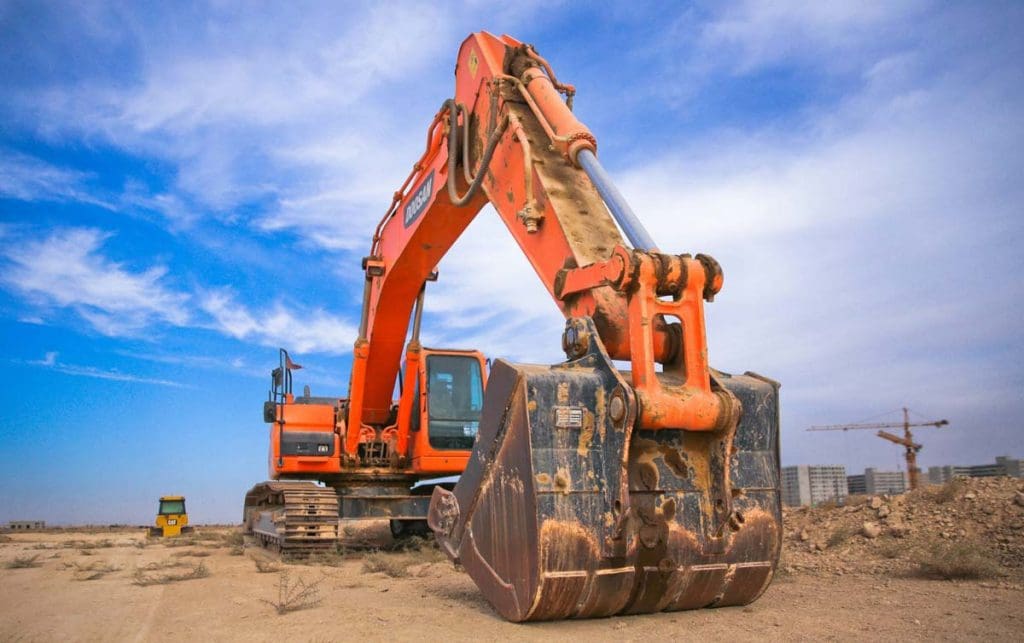
3. Post-Operating Safety Tips for a Bulldozer
Ending a project safely is just as important as starting one safely. Proper shutdown procedures reduce equipment wear, prevent unauthorized use, and keep the worksite secure.
At the end of a workday, you’ll need to:
- Park on stable, level ground
- Lower the blade and attachments
- Engage the parking brake
- Follow the manufacturer shutdown steps
- Remove the ignition key
- Check for damage or leaks
- Secure the job site
4. Common Hazards and How to Avoid Them
Bulldozers are built to tackle tough projects, but that doesn’t eliminate the potential for accidents. Recognizing common hazards and knowing how to prevent them is a crucial part of bulldozer operation safety.
Here are some common job site hazards, as well as how to manage or prevent them:
Rollovers:
A bulldozer rolling over is often caused by uneven terrain or poor slope navigation. To prevent this from happening, work up and down slopes, reduce your speed, and keep the blade low for stability.
Collisions:
A collision can occur with vehicles, structures, or other equipment. Be sure to remain aware of your surroundings, follow site traffic plans, and use spotters.
Entrapment in Blind Spots:
Bulldozers have a handful of blind spots, which can lead to ground workers getting pinned in areas where the operator cannot see them. Maintain exclusion zones and establish clear communication protocols.
Mechanical Failure:
Worn parts or poor maintenance can lead to a loss of control. Follow regular inspection and maintenance schedules to catch potential issues early.
Material Displacement:
Debris or soil can sometimes move unpredictably, causing the bulldozer to tilt or lurch dangerously. Avoid overfilling the blade and operate the equipment at safe speeds.

FAQs
What personal protective equipment (PPE) is required for bulldozer operators?
Bulldozer operators should wear a hard hat, steel-toe boots, gloves, high-visibility clothing, and hearing protection. In some environments, operators may also require respiratory protection for dust-heavy conditions.
Can bulldozers operate in the rain?
Yes, bulldozers can operate in rainy conditions, but extra caution is needed. Wet terrain can reduce traction, increase stopping distances, and raise the risk of sliding on slopes. Operators should slow down, avoid steep angles, and check the stability of the ground before pushing heavy loads.
How often should a bulldozer be inspected?
A basic inspection should be done before each shift, including checking fluid levels, safety devices, and visible parts. In addition, scheduled maintenance should follow the manufacturer’s recommendations to keep the machine in optimal condition.
What is the safest way to operate a bulldozer on a slope?
The safest method is to travel up and down slopes rather than across them, keeping the blade low for stability. This reduces the risk of rollovers and helps maintain better control of the machine. Avoid abrupt turns or speed changes when working on inclines.
Starting Your Career as a Bulldozer Operator
Understanding bulldozer operation safety is not just about preventing accidents; it’s a cornerstone of building professional skills. Employers value operators who can balance productivity with responsible machine handling.
At Heavy Equipment Colleges of America, students get hands-on learning in a controlled, supervised setting. Our Heavy Equipment I program builds foundational skills, while Heavy Equipment II prepares you for more complex projects.
Whether you’re new to the industry or advancing your career, our certification programs offer extensive training designed for real-world application. Apply online to take the first step towards a fulfilling career in the heavy equipment industry.
Build a Strong Future in Heavy Equipment Operation
Train to Operate Bulldozers Cranes Safely and Confidently
Real-World Experience | Expert Instructors | Career-Focused Training
Enroll in Our Bulldozers Operator Program Today!
Start Enrollment ProcessFind The Right Location For You